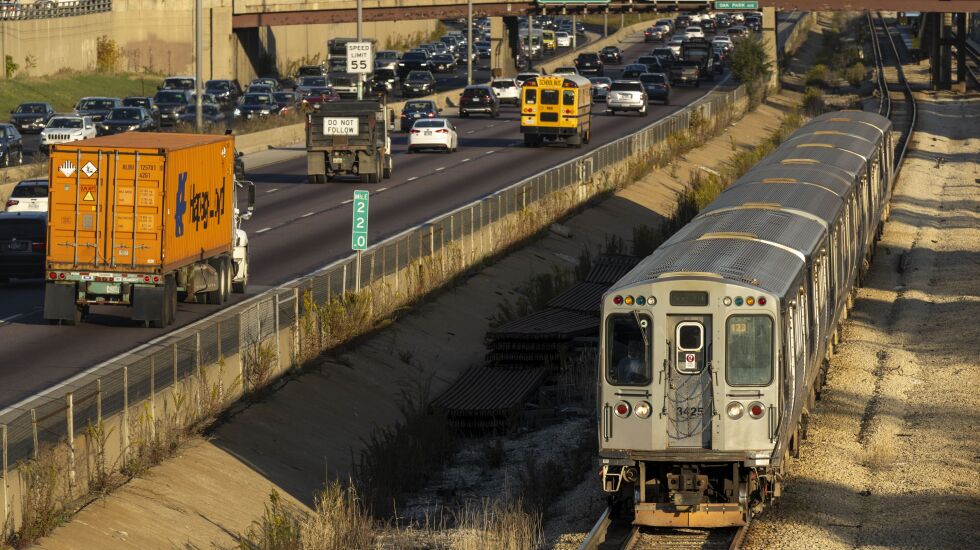
A state-appointed group is proposing sweeping changes to Chicago-area transit systems, including fare hikes and new service options, as the region’s public transportation continues to face low ridership and a looming financial shortfall.
The Chicago Metropolitan Agency for Planning is developing a report for Illinois lawmakers on keeping the region’s three transit agencies afloat and attracting more riders. The Chicago Transit Authority, Metra and Pace will have a $730 million budget gap in 2025 once pandemic federal relief comes to an end.
While the final recommendations are still in the works, CMAP is considering a range of ideas that would reshape the region’s transit. They include increasing fares, offering more affordable fare options, reorganizing the three separate systems under one regional agency, raising sales taxes and making the bus system more frequent and reliable for riders.
“We’re faced with this fiscal cliff for the transit system — a key component of this whole thing. We have to make sure our transit system is viable to meet our climate change goals, our economic goals and for viable mobility in our region,” said Laura Wilkison, CMAP’s senior director and policy adviser.
The report will go through two rounds of CMAP approval and is due to Gov. J.B. Pritzker and the General Assembly by Jan. 1. CMAP will continue gathering feedback from community organizations and riders before wrapping up the recommendations.
Other proposals include moving to one fare system rather than the current separate ones for each agency; adding “transit ambassadors” to improve safety; and improving compliance with the Americans with Disabilities Act by expanding transit options for riders with disabilities.
Regular, ongoing fare increases are also on the table, as are more affordable or free options for low-income riders. CMAP recommends the state require the transit agencies to recalculate rates every four years based on inflation, rather than the existing irregular and sometimes dramatic fare hikes.
Fares make up a large part of the agencies’ operating revenue, but they don’t keep up with cost increases, especially after the dramatic drop in ridership from the pandemic, according to CMAP’s draft recommendations.
CMAP points to other cities as examples. The Los Angeles County Metropolitan Transportation Authority Board passed major fare reforms last year. The agency now recalculates base fares every four years, has a fare system with a daily $5 cap and $18 weekly cap, and offers low-income riders 30 free rides a month, up from 20.
The three sets of scenarios CMAP is developing have different annual costs: $500 million, $1 billion or $1.5 billion in new public funding. The proposals also ask for $200 million or $250 million from the three transit agencies’ savings or fare revenue.
CMAP is also exploring expanding the sales tax base, though housing, utilities and health care would not be among the services taxed.
Increasing sales tax is not enough to address funding needs, Wilkison said. CMAP is also looking into fees for drivers, such as a charge on vehicle registration costs that would go directly to transit.
The funding and service change strategies would likely come with altering how transit is managed in the region. CTA, Metra and Pace now operate as separate agencies, and the Regional Transportation Authority oversees financing. CMAP’s recommendations could include keeping the three separate and strengthening RTA or combining the three under one regional agency.
“We need to improve upon the system,” Wilkison said. “We’re not trying to go back to where we were in 2019. And if people are going to come back to transit, it has to be to an improved system.”
Wilkison presented an update to Metra board members during a public meeting on Wednesday. The public will have another chance to share feedback from 9 to 11 a.m. on Sept. 6 at CMAP’s offices, 433 W. Van Buren St., Suite 450.







